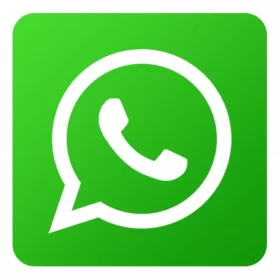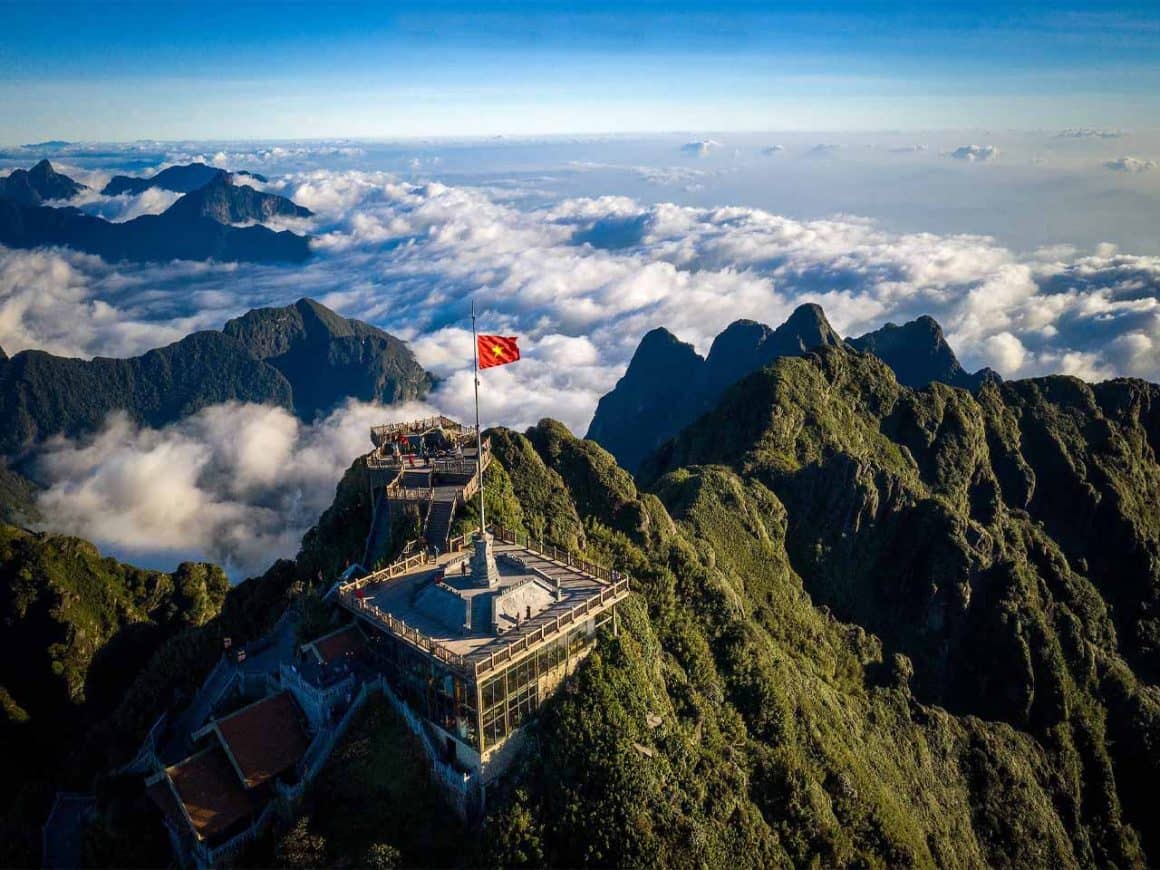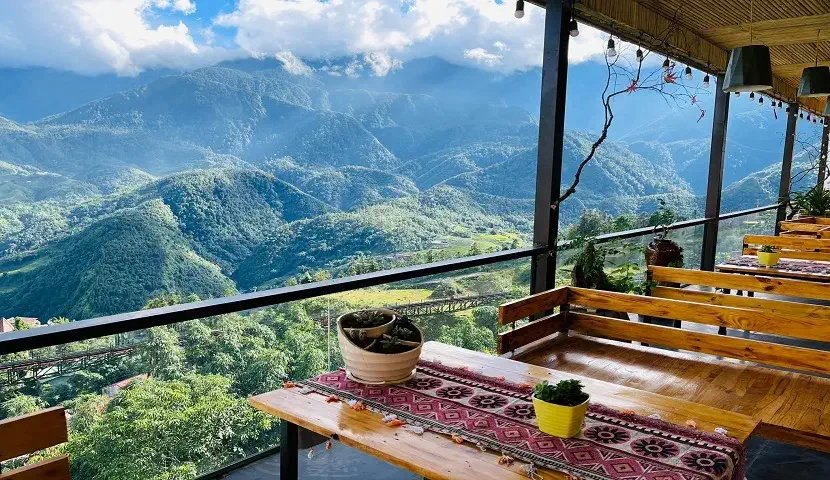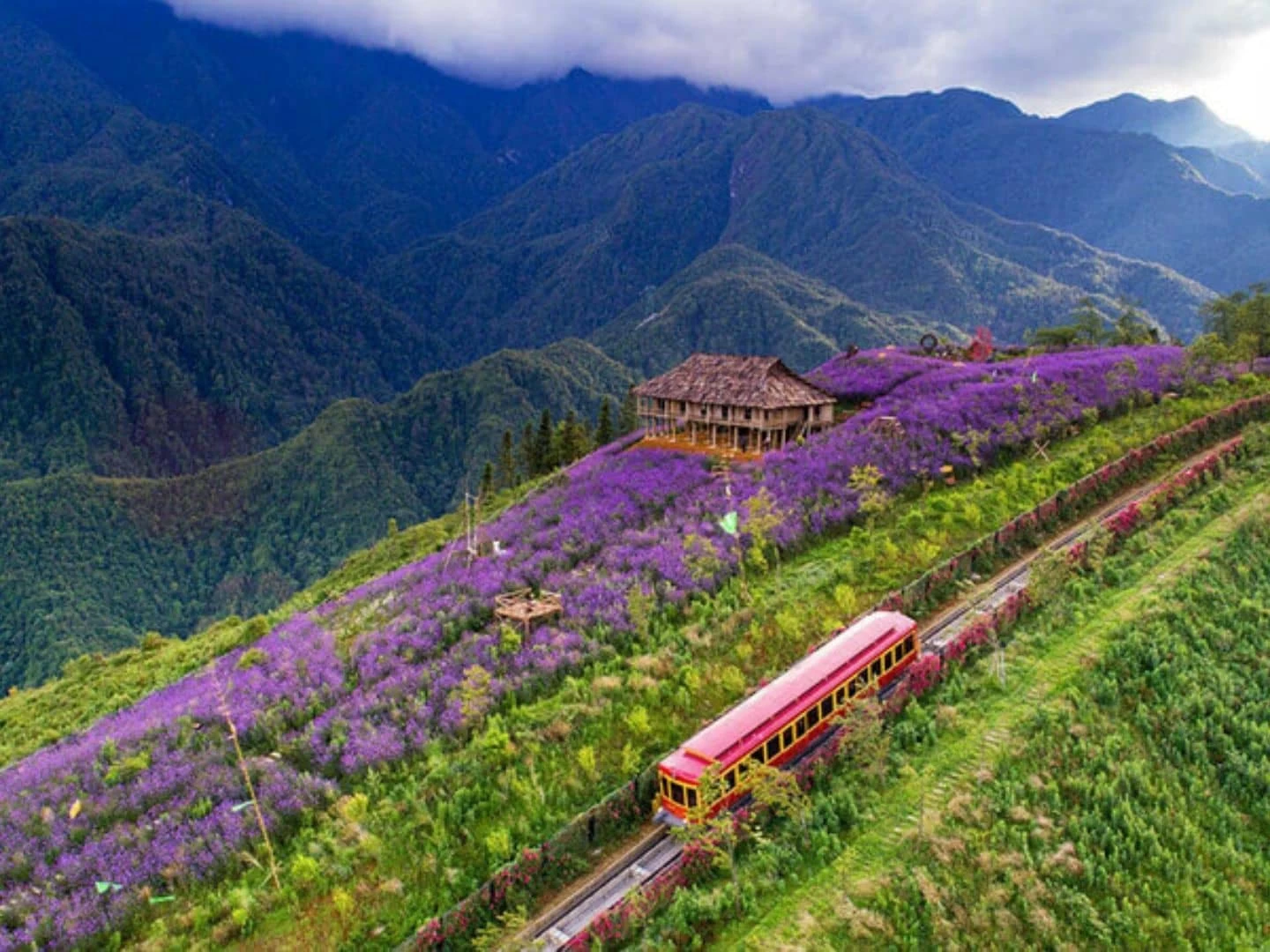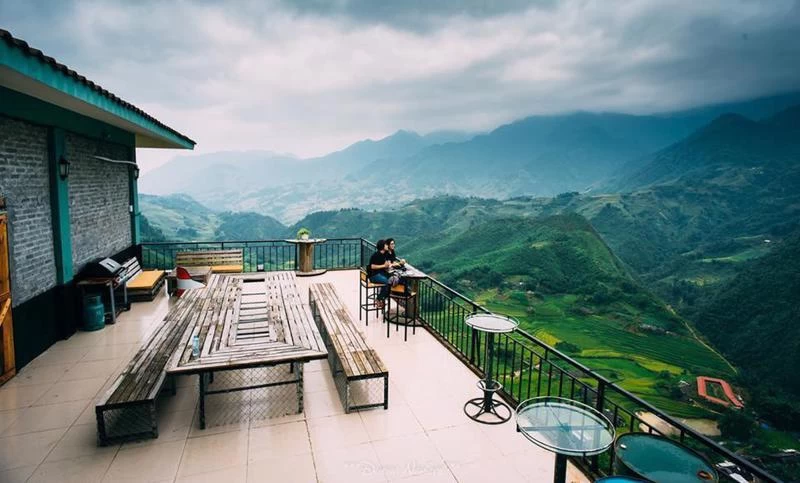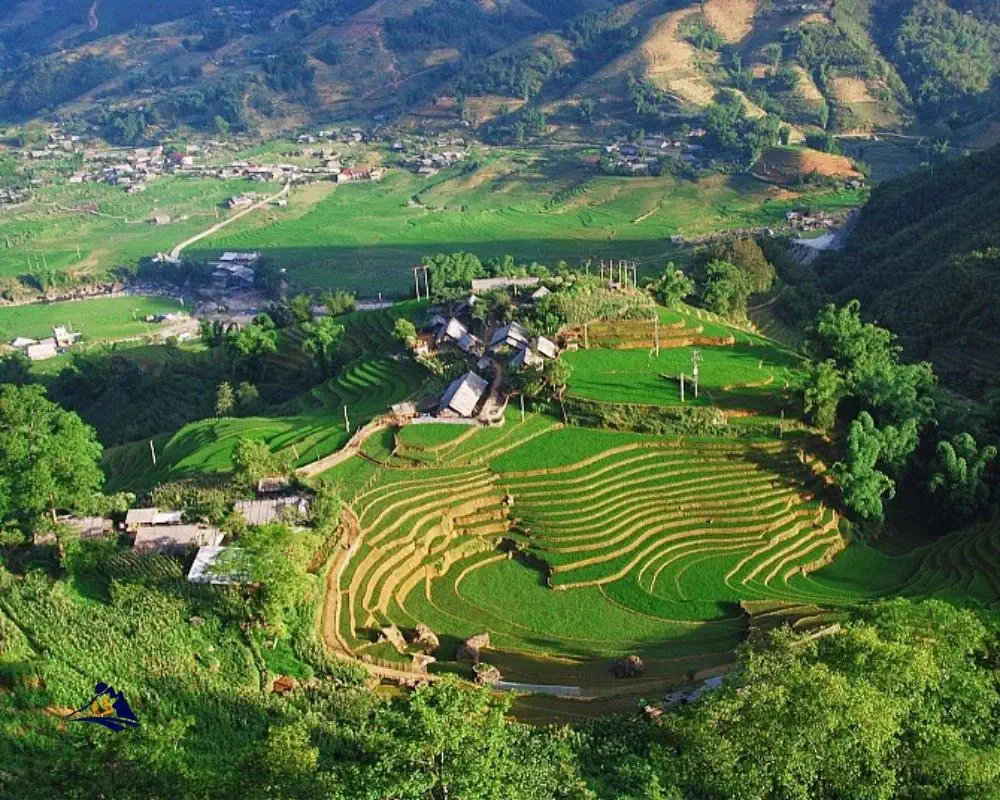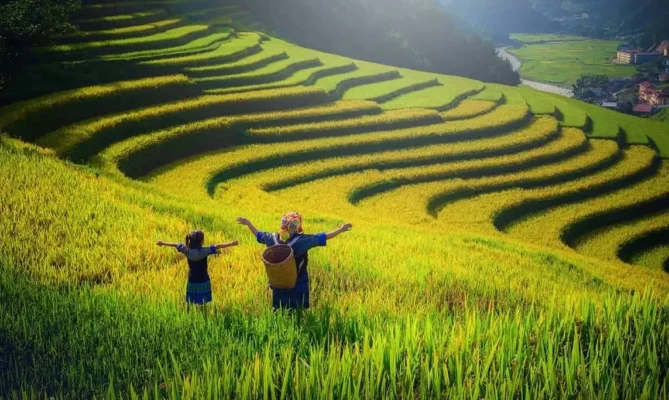
Best time to visit Sapa
Discover Sapa weather with Ula Travel’s comprehensive guide. Learn about Sapa’s climate throughout the year, including seasonal temperature variations, rainfall patterns, and tips for packing and planning your visit. Whether you’re visiting during the lush spring blooms, the cool autumn harvest or the chilly winter months, find out how to make the most of your trip to this picturesque destination. Explore the best times to visit Sapa, ideal activities by season, and essential travel advice for an unforgettable experience in Sapa.
I. Introduction
1. Where is Sapa?
Perched high in Vietnam’s northern mountains, Sapa is a mesmerizing destination renowned for its stunning landscapes and vibrant cultural heritage. This picturesque town captivates visitors with its lush terraced rice paddies, majestic peaks, and charming local villages. Sapa’s diverse weather patterns-ranging from refreshing coolness in summer to crisp, frosty winters-add to its appeal, offering a dynamic backdrop for adventure and exploration throughout the year.
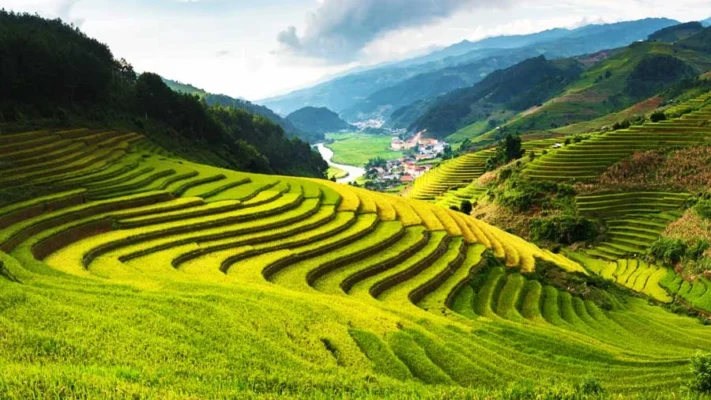
Sapa is famous for its terraced fields and cool temperate climate.
Sapa is situated at an elevation of approximately 1,500 meters (4,900 feet) above sea level, in the far north of Vietnam, near the border with China. Its location in the Hoàng Liên Sơn mountains not only provides it with stunning panoramic views but also contributes to its unique climate and biodiversity.
The distance from Hanoi to Sapa is approximately 350 kilometers (220 miles) by road. The journey typically takes around 5 to 6 hours by car or bus, depending on road conditions and traffic. The route offers scenic views of the Vietnamese countryside and winding mountain roads, making the journey an integral part of the travel experience.
Are you looking for Sapa tours?
2. Highlights of Sapa
- Pectacular Mountain Scenery: Sapa is famous for its dramatic mountainous landscapes, characterized by steep, terraced hillsides and verdant valleys. The area is home to Fansipan, the highest peak in Vietnam and Indochina, standing at 3,147 meters (10,326 feet). The majestic mountains, often shrouded in mist, create a mystical atmosphere that attracts both adventure seekers and nature enthusiasts.
- Temperate Climate: Unlike much of Vietnam’s tropical climate, Sapa enjoys a temperate climate due to its high altitude. The weather here is marked by distinct seasons: mild, warm summers with temperatures ranging from 20°C to 30°C (68°F to 86°F), and cool winters where temperatures can drop below 10°C (50°F). This climate allows for a unique blend of lush greenery and seasonal changes, enhancing its appeal as a year-round destination.
- Rich Cultural Diversity: The town is also renowned for its cultural diversity, with various ethnic minority groups, including the Hmong, Dao, Tay, and Giay, residing in the surrounding areas. Their vibrant traditions, colorful festivals, and traditional crafts add a rich cultural layer to Sapa’s natural allure.
II. Overview of Sapa Weather
Sapa is renowned for its temperate climate, offering a refreshing escape from the heat of the lowlands. This charming destination features a climate that is both cool and comfortable year-round, making it an attractive location for travelers seeking a pleasant environment.
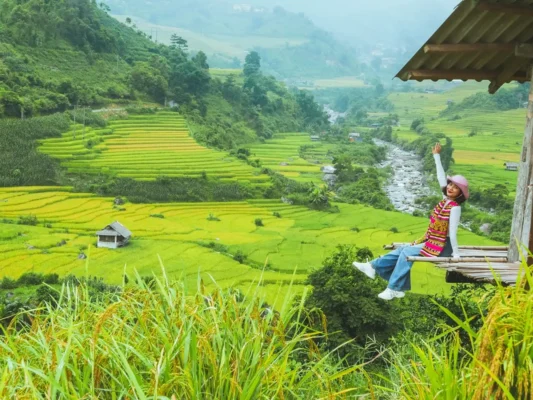
Sapa’s climate is extremely suitable for vacations and nature exploration.
Sapa enjoys a temperate climate, which is relatively rare in tropical Vietnam. This type of climate is characterized by moderate temperatures and distinct seasonal variations. Due to its elevation, Sapa experiences cooler temperatures compared to other regions in Vietnam, contributing to its reputation as a refreshing getaway. The weather here is generally mild and comfortable, with temperatures rarely reaching extremes.
Sapa’s unique climate, marked by cool temperatures and distinct seasons, enhances its allure, making it a year-round destination for travelers seeking both adventure and tranquility. Whether you’re trekking through lush valleys, exploring vibrant local markets, or immersing yourself in the rich traditions of the indigenous communities, Sapa promises an unforgettable experience that blends natural beauty with cultural richness.
III. Sapa Weather by Seasons
1. Spring (March–May)
a. Sapa Weather in Spring
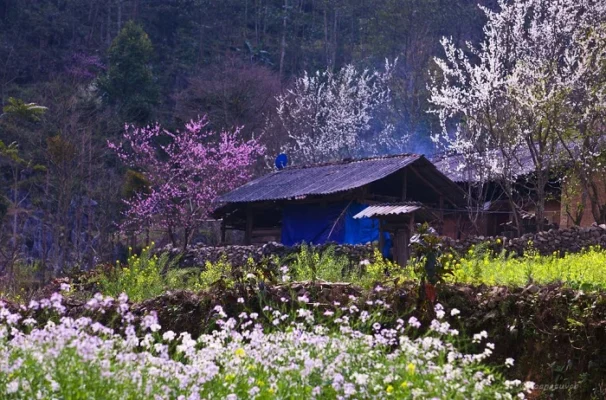
Sapa is full of flowers in spring
During spring, the climate is particularly pleasant, making it a delightful time to visit. Average temperatures range from 15°C to 25°C (59°F to 77°F). The weather is typically warm, with the days being comfortably mild and the nights slightly cooler. Spring is characterized by frequent light rain showers, which help to rejuvenate the lush landscapes of the region.
The combination of mild temperatures and gentle spring rains creates a vibrant and fresh atmosphere. The mist often shrouds the mountains and valleys, adding a mystical quality to the surroundings. Visitors can expect a refreshing and invigorating experience, perfect for exploring the outdoors.
Start your journey with: Hanoi to Sapa Private Tour
b. Activities in Spring
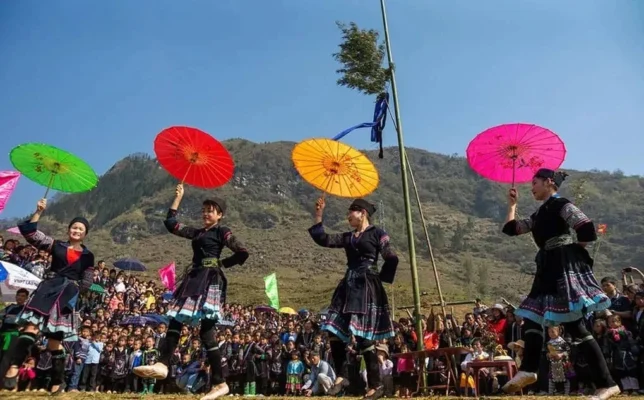
Many festivals in Sapa take place in spring.
Exploring Blossom Fields:
- Peach Blossom Fields: Spring is the ideal time to witness the breathtaking beauty of peach blossoms. The fields around Sapa are adorned with delicate pink flowers, creating picturesque scenes that are perfect for photography.
- Plum Blossom Fields: Plum blossoms also burst into bloom during this season, adding a splash of white to the landscape. These blossoms can be found in various parts of Sapa, particularly in the rural areas and mountainous regions.
Participating in spring festivals:
- Local Festivals: Spring is a vibrant time in Sapa due to the numerous traditional festivals celebrated by the local ethnic communities. These festivals often feature colorful parades, traditional music and dance performances, and cultural exhibitions. It’s a fantastic opportunity to experience the rich heritage and local customs of the area.
Trekking and Hiking:
- Nature Walks: The mild weather makes spring an excellent time for trekking and hiking. Trails around Sapa, such as those leading to Cat Cat Village or Ta Phin Village, offer stunning views of blooming landscapes and are easier to navigate in the temperate weather.
- Scenic Views: Springtime offers clear, crisp air that enhances the visibility of Sapa’s stunning natural beauty, including terraced rice fields and misty mountains.
Visiting traditional villages:
- Cultural Exploration: The spring season is perfect for visiting traditional ethnic minority villages around Sapa. The villagers are often engaged in various cultural activities and farming practices, providing visitors with a unique glimpse into their daily lives and traditions.
Do not miss: Sapa Tour from Hanoi 7 Days
2. Summer (June–August)
a. Sapa Weather in Summer
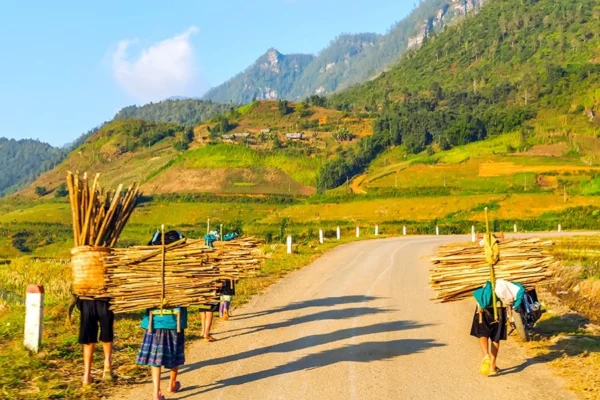
Summer with bright yellow sunshine
During the summer months from June to August, Sapa experiences a pleasant yet dynamic weather pattern. Temperatures typically range from 20°C to 30°C (68°F to 86°F), providing a comfortable environment for outdoor activities.
However, this period is also characterized by significant rainfall. Heavy rains and thunderstorms are common, often occurring in the late afternoon or evening. This precipitation contributes to the lush green landscapes and vibrant flora of the region.
You will be like: Northern Vietnam Itinerary
b. Activities in Summer
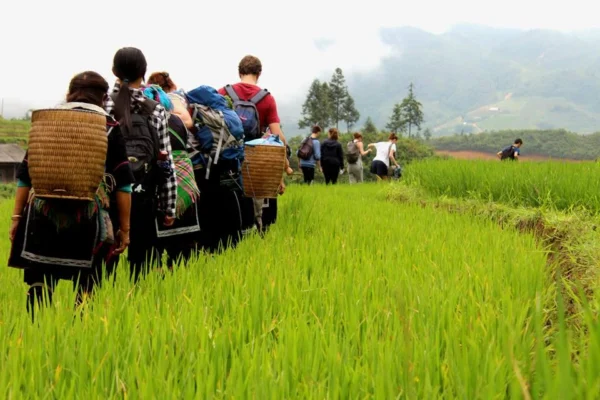
Trekking in Sapa offers a wonderful experience.
- Trekking: Summer is an excellent time for trekking in Sapa. The relatively mild temperatures, combined with the lush greenery resulting from the seasonal rains, create perfect conditions for exploring the numerous trekking trails. Trails through terraced rice fields, dense forests, and along rivers offer breathtaking views and immersive experiences in nature. Popular trekking routes include the hike to Mount Fansipan, the highest peak in Vietnam, and routes leading to traditional H’mong and Dao villages.
- Visiting Ethnic Villages: Sapa is home to several ethnic minority groups, including the H’mong, Dao, Tay, and Xa Pho. Summer is a great time to visit these villages, as the weather allows for comfortable exploration and interaction with local communities. You can witness traditional lifestyles, participate in cultural activities, and enjoy local crafts and cuisine. The vibrant landscape also enhances the cultural experience, making it a memorable visit.
- Enjoying the Cool Highland Air: Despite the warmer temperatures compared to other seasons, Sapa’s high altitude ensures that the air remains fresh and cool. The evenings, in particular, can be quite chilly, providing a refreshing break from the heat experienced in lower-altitude regions of Vietnam. This cooler air, combined with the natural beauty of the area, makes summer an ideal time for outdoor relaxation and sightseeing.
Do not miss: Best things to do in Sapa
3. Autumn (September–November)
a. Sapa Weather in Autumn
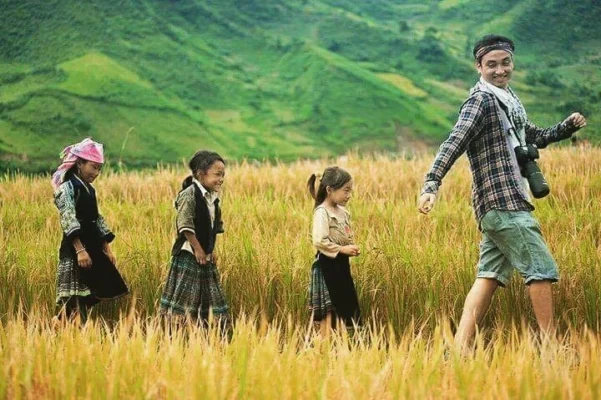
Autumn is the most beautiful time in Sapa
During autumn, which spans from September to November, the weather is notably pleasant and comfortable. The temperatures range between 15°C and 25°C (59°F to 77°F), making it ideal for outdoor activities. The air is fresh and dry, creating a crisp and invigorating atmosphere. This time of year is marked by clear skies and reduced humidity, offering a perfect climate for sightseeing and exploration.
Learn more about: Northern Vietnam Wonders
b. Activities in Autumn
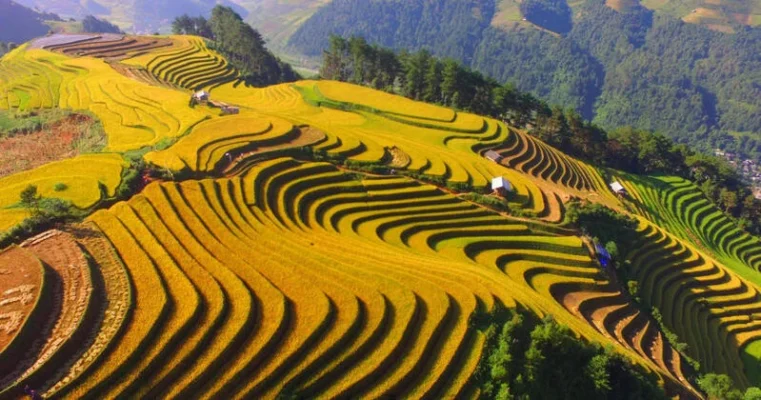
Autumn is ideal for beautiful photos
- Scenic Viewing: Autumn is one of the best times to enjoy Sapa’s breathtaking landscapes. The cooler temperatures and clear skies provide excellent visibility, allowing visitors to fully appreciate the stunning natural beauty of the region. The lush green hills and terraced rice fields are particularly captivating, as they undergo a transformation with the onset of the harvest season.
- Photography of Ripening Rice Fields: One of the highlights of autumn in Sapa is the golden hue of the rice terraces as they come into full harvest. The rice fields turn a rich golden color, creating a picturesque landscape perfect for photography. This vibrant display of nature’s bounty offers fantastic opportunities for capturing memorable images of the region’s agricultural heritage and rural charm.
- Cultural Activities: Autumn is also a great time to immerse yourself in Sapa’s rich cultural tapestry. During this period, various local festivals and cultural events take place, showcasing traditional music, dance, and crafts. Visitors can explore local markets and interact with ethnic minority communities, gaining insight into their customs and way of life. Participating in these cultural activities provides a deeper connection to Sapa’s heritage and traditions.
4. Winter (December–February)
a. Sapa Weather in Winter
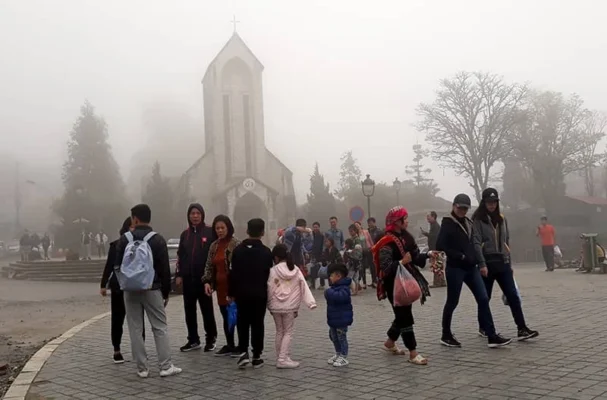
Sapa climate is quite cold in winter and has a lot of fog.
During the winter months of December through February, Sapa experiences some of the coldest temperatures of the year. The average temperature can drop below 10 °C (50 °F), making it noticeably chilly. In addition to the low temperatures, the region often encounters fog and frost. These weather conditions can create a mystical atmosphere with mist-covered landscapes and frost-kissed vegetation. Occasionally, temperatures may even dip to near freezing, leading to the possibility of light snowfall or ice, though heavy snow is rare.
b. Activities in Winter

Cold weather makes exploring cuisine more attractive
Experience the cold weather:
- Embrace the winter chill by exploring Sapa’s beautiful outdoor settings. Bundle up in warm layers, including thermal clothing, scarves, gloves, and hats, to fully enjoy the crisp, cold air. The winter landscape offers a unique, serene beauty, with frost-covered trees and misty mountain peaks providing excellent photo opportunities.
Savor warm local cuisine: Sapa Cuisine-Top 11 Unique Flavors Dishes
- Winter is the perfect time to indulge in Sapa’s hearty and comforting dishes. Enjoy Thang co (stewed horse meat and horse organs), hot pot, and other local specialties that will warm you from the inside out. Many restaurants and street vendors offer delicious hot meals that are particularly satisfying in the cold weather.
Participate in winter activities:
- Trekking: While winter treks can be more challenging due to the cold and potentially icy paths, they offer a chance to experience Sapa’s dramatic winter scenery. Be sure to wear appropriate footwear with good traction and take the necessary precautions.
- Cultural Experiences: Visit local markets and festivals that occur during the winter months. The Sapa market and surrounding villages often have seasonal events and traditional celebrations that reflect the local culture and customs.
- Relaxation: Take time to enjoy cozy indoor activities. Many accommodations in Sapa offer warm, inviting spaces with fireplaces or heaters where you can relax after a day of exploring. Consider visiting a local spa or enjoying a hot drink in a comfortable café.
IV. Monthly Weather Forecast
Sapa experiences distinct seasons with varying weather patterns throughout the year. Understanding the monthly weather can help you plan your visit accordingly. Below is a detailed monthly forecast, including average temperatures, humidity levels, and rainfall.
1. Monthly Weather Details
| Month |
Average Temperature (°C) |
Average Humidity (%) | Average Rainfall (mm) |
| January | 8°C–18°C | 85% | 30 mm |
| February | 9°C–19°C | 80% | 20 mm |
| March | 12°C–22°C | 75% | 50 mm |
| April | 15°C–24°C | 70% | 80 mm |
| May | 18°C–26°C | 65% | 120 mm |
| June | 20°C–28°C | 70% | 200 mm |
| July | 22°C–30°C | 75% | 300 mm |
| August | 22°C–30°C | 80% | 280 mm |
| September | 20°C–28°C | 85% | 200 mm |
| October | 16°C–24°C | 80% | 100 mm |
| November | 12°C–22°C | 85% | 60 mm |
| December | 9°C–19°C | 90% | 40 mm |
2. Temperature
- January to February: cool to mild temperatures with a range between 8°C and 19°C. Ideal for exploring Sapa’s winter landscape.
- March to May: Temperatures gradually rise from 12°C to 26°C, marking the start of spring and early summer. This is a great time for trekking and outdoor activities.
- June to August: warmest period with temperatures ranging from 20°C to 30°C. High humidity and heavy rainfall are common, so prepare for wet conditions.
- September to December: Temperatures decrease to cooler ranges between 9°C and 28°C. The weather becomes drier and cooler, making it perfect for travel and sightseeing.
3. Humidity
- High Humidity: From June to August, humidity levels are at their peak, averaging 75% to 80%. This can make the weather feel hotter and more oppressive.
- Moderate Humidity: During the other months, humidity ranges from 65% to 90%, with the highest levels in December and January.
4. Rainfall
- Rainy Season: June to August experience the highest rainfall, with totals ranging from 200 mm to 300 mm. Be prepared for frequent rain showers and potential flooding.
- Drier Periods: March to May and September to November see moderate rainfall. The rest of the year is relatively dry, with January and February being the driest months.
V. Best Time to Visit Sapa
1. Sightseeing and Outdoor Activities
Spring (March to May): Ideal for nature lovers and those interested in witnessing the blooming of flowers and lush green landscapes. The moderate weather makes it perfect for exploring Sapa’s natural beauty and engaging in outdoor activities like hiking and visiting local markets.
Autumn (September to November): A great choice for capturing the stunning views of terraced rice fields in their golden glory. The clear skies and pleasant temperatures make it an excellent time for sightseeing, trekking, and enjoying outdoor photography.
2. Cultural Experiences and Festivals
Winter (December to February): If you’re interested in experiencing local festivals and unique cultural events, winter offers opportunities to participate in traditional celebrations. The cold weather adds a distinctive charm to the local festivals, though it requires preparation for the chill.
3. Avoiding Crowds and Finding Deals
Off-Peak Seasons: Traveling during the shoulder seasons (early spring and late autumn) can help you avoid large tourist crowds and benefit from lower prices on accommodations and tours. This is a good time to explore Sapa more leisurely and enjoy an authentic experience.
In conclusion, Sapa weather varies significantly across the seasons, offering unique experiences throughout the year. From the mild temperatures and blooming flowers of spring to the crisp autumn air and the chilly winter frost, each season provides its own charm. Plan your visit based on your preferred weather and activities, and make sure to pack accordingly for a comfortable and enjoyable trip. For more details or to book your Sapa adventure, feel free to contact us. We are here to help you plan an unforgettable journey.
See more: Sapa Travel Tips

